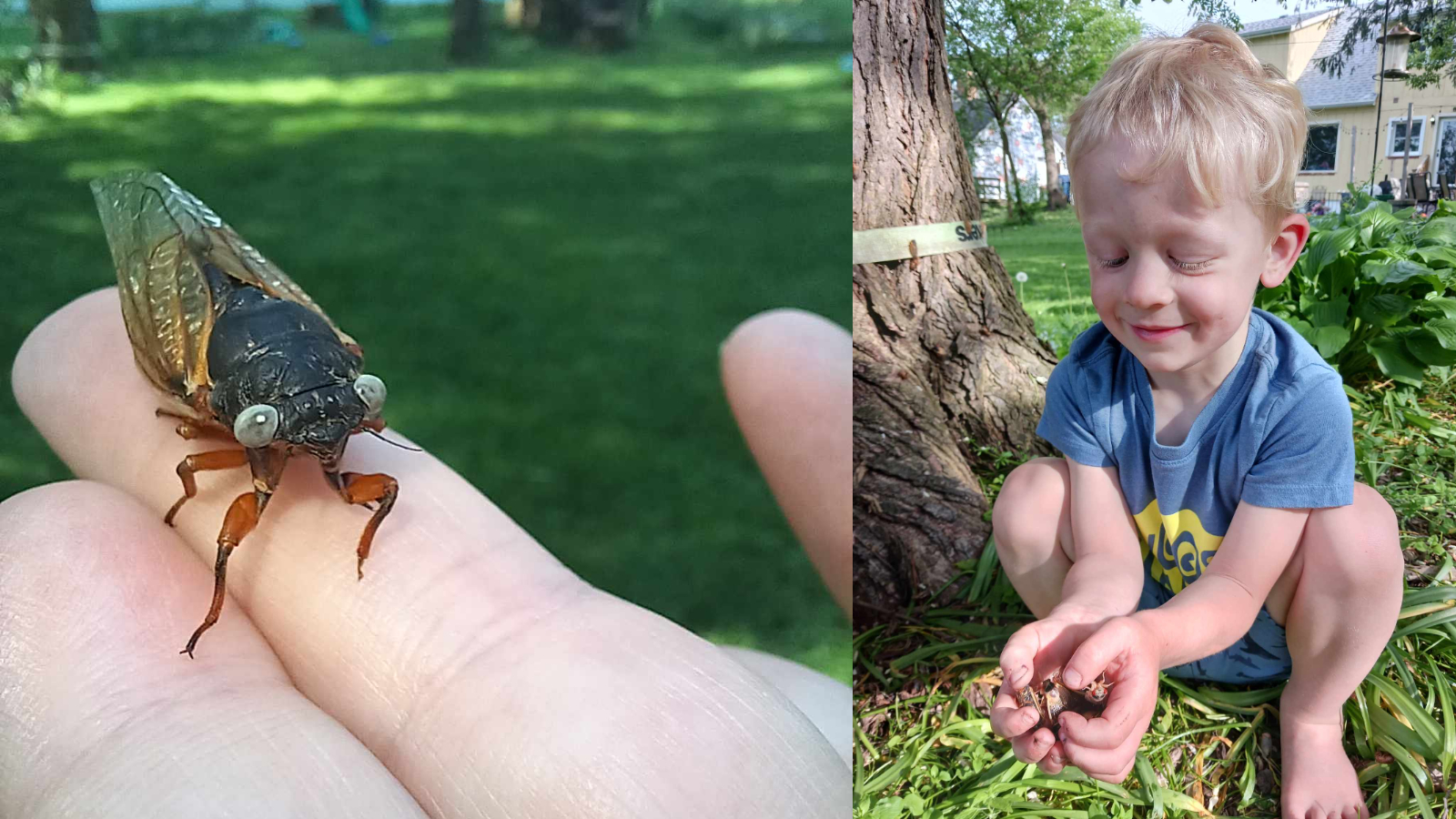
Trillions of red-eyed cicadas are emerging across the eastern U.S. this spring — but hidden among them are a handful of "one in a million" blue-eyed bugs, recent sightings show.
Earlier this month, 4-year-old Jack Bailey from Wheaton, Illinois, discovered a blue-eyed cicada in his family's yard. Experts at the Field Museum of Natural History in Chicago identified the specimen as a female Brood XIII cicada belonging to the species Magicicada cassini. Brood XIII cicadas are made up of three species and emerge every 17 years to mate. This year, for the first time since 1803, Brood XIII cicadas are appearing at the same time as Brood XIX, which comprises four species and emerges every 13 years.
Jack and his mother Greta Bailey donated the blue-eyed cicada to the Field Museum, where scientists will try to sequence its DNA and identify the genes responsible for the unusual eye color, according to a statement. The blue pigment is likely the result of a rare mutation.
"I have been in Chicago for five periodical cicada emergences of our Brood XIII, and this is the first blue-eyed cicada I have seen," Jim Louderman, a collections assistant in the insect division of the Field Museum, said in the statement. "I have also seen two emergences of Brood X in Indiana and two emergences of Brood XIX in Central Illinois. These rare [blue-eyed] insect emergences are always infertile and can not have offspring, which is why they remain so rare."
Related: Double cicada bloom 2024 — Google Doodle celebrates once-in-221-year event with band of bugs
Another blue-eyed cicada was photographed in the Orland Grassland forest preserve southwest of Chicago, NBC Chicago reported.
Blue-eyed cicadas are rare and are "one in a million," Gene Kritsky, a professor of biology at Mount St. Joseph University in Ohio, told the news channel.
Kritsky told NBC Chicago that the image of the blue-eyed cicada in Orland Grassland is only the second he has seen this year out of 40,000 photographs submitted to his app, Cicada Safari, which tracks cicadas in the United States. In previous emergences, only two or three reports out of 500,000 were of blue-eyed cicadas, he said.
Cicada sightings in the Chicago area exploded earlier this month after a rise in temperatures. Cicadas emerge from the soil when temperatures a few inches below the surface reach 64 degrees Fahrenheit (18 degrees Celsius), according to a blog post by Martha Weiss, a professor of biology at Washington D.C.'s Georgetown University.







